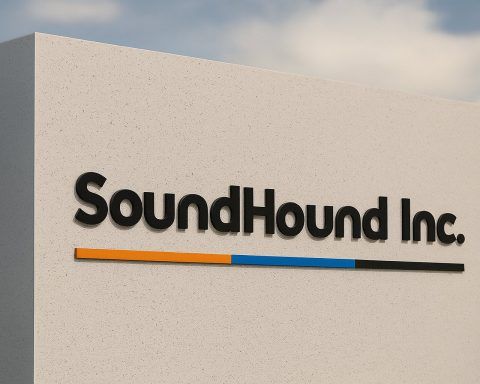- Record-Breaking Stock Surge: Nvidia (NVDA) has become the world’s most valuable company with a market capitalization above $5 trillion, after its stock jumped ~3% to about $206 per share in late October 2025 [1]. NVDA shares are up roughly 78% year-to-date on surging demand for AI chips [2] [3].
- AI Demand Driving Growth: The company’s data center revenue is soaring by triple digits year-over-year thanks to red-hot demand from tech giants deploying generative AI systems [4]. Nvidia now controls an estimated 80% of the global AI accelerator chip market, far outpacing competitors like AMD and Intel [5].
- Blockbuster Deals & Partnerships: Nvidia is capitalizing on the AI boom with massive partnerships. In September 2025, it announced a strategic tie-up with OpenAI, including an investment of up to $100 billion in OpenAI and a commitment to supply cutting-edge data center GPUs [6] [7]. The company also unveiled a $1 billion investment in Nokia (for a ~2.9% stake) to co-develop AI-powered telecom networks [8], and it’s collaborating with Oracle and the U.S. Department of Energy to build some of the world’s largest AI supercomputers powered by Nvidia’s upcoming “Blackwell” GPUs [9].
- Earnings Momentum: Nvidia’s financial performance has been outstanding. It reported Q2 FY2025 revenue of $46.74 billion (vs. $46.06 B expected) with EPS beating estimates [10], and analysts anticipate another strong beat in the upcoming Q3 FY2025 earnings report on Nov. 19, 2025 [11]. Trailing 12-month revenue has reached $165 billion – up 1,000% in five years [12] – reflecting unprecedented demand for its AI chips.
- Analyst Bullishness – “Golden Wave” of AI: Wall Street remains overwhelmingly bullish on NVDA. Loop Capital recently hiked its price target from $250 to $350 and described Nvidia as riding a “Golden Wave” of generative AI adoption fueling stronger-than-anticipated demand [13]. In early November, Rosenblatt and Jefferies also raised targets (to ~$240) amid what one called a “scramble to secure AI compute” capacity [14] [15]. Overall, 37 of 39 analysts rate NVDA a “Strong Buy”, with a consensus 12-month target around $237 (about 12–15% above current levels) [16] [17].
- Market & Competitors: Nvidia’s valuation now eclipses peers – by July it crossed $4 trillion, surpassing Apple and Microsoft [18]. Rival AMD has launched its MI300 series AI accelerators to challenge Nvidia’s dominant H100/H200 GPUs, even offering more memory at lower cost. However, experts note Nvidia’s latest H200 “Blackwell” chips still outperform AMD’s MI300X on most AI tasks (albeit at about twice the price) [19]. Intel’s AI chips (Gaudi series) and custom silicon from big cloud players have yet to dent Nvidia’s lead in performance and ecosystem.
- Technical & Fundamental Snapshot: NVDA stock is trading near all-time highs, reflecting strong price momentum. It recently broke through key technical resistance with high volume, confirming bullish institutional interest [20]. Despite explosive growth, Nvidia’s forward P/E ratio ~40–50 remains above market averages [21]. Notably, this is lower than its own 5-year historical average (~40× forward earnings in mid-2025 [22]), thanks to earnings surging alongside the stock price.
- Forecasts & Investor Outlook: Looking ahead, analysts see continued growth as AI investment accelerates. Hyperscalers (like Amazon, Alphabet, Meta) are projected to spend trillions on AI infrastructure in coming years [23], a trend Nvidia is poised to capture. Consensus forecasts call for steady revenue and profit expansion through 2030 – one analysis projects revenue rising to ~$265 billion by 2030 with EPS ~$7.24, yielding a baseline 2030 stock target ~ $265 (≈28% above today) and a bullish-case target above $500 [24] [25]. Short-term, 24/7 Wall St. analysts see NVDA around $250 by 2026 (20%+ upside) [26], though their 2025 year-end base case is ~$194 (suggesting a modest pullback) [27].
- Risks – Valuation & Geopolitics: Experts caution that Nvidia’s rich valuation “leaves little margin for error” [28]. Any slowdown in AI spending or an earnings miss could spark volatility. There are also external risks: U.S. export curbs on advanced chips to China threaten a chunk of Nvidia’s future sales, and rivals (or big customers like OpenAI) developing in-house AI chips could eventually challenge its dominance [29] [30]. Additionally, profit margins may face pressure after peaking in 2023–24 – gross margin has slipped to ~70% and operating margin ~58%, and booming chip supply (e.g. from TSMC ramps) could normalize pricing power [31].
NVDA Stock Skyrockets on AI Frenzy
Nvidia’s stock has been on a meteoric rise, fueled by an unprecedented boom in artificial intelligence. As of November 4, 2025, NVDA trades around $207 per share, up roughly 70–80% year-to-date [32] [33]. The stock recently notched all-time highs, propelling Nvidia’s market capitalization above $5 trillion for the first time [34]. This milestone, reached on October 29, 2025, made Nvidia the first publicly traded company ever to cross the $5 trillion mark [35] – ahead of tech giants like Apple and Microsoft. Shares surged ~3% that day to $206.08 on nearly 190 million shares traded, reflecting fervent investor confidence in Nvidia’s long-term AI story [36] [37].
Such gains build on an extraordinary run over the past two years. Since late 2022 – when generative AI burst onto the scene with tools like ChatGPT – Nvidia’s stock price has risen roughly 12-fold, an ascent that has far outpaced broader market indices [38]. Even after a 10-for-1 stock split in 2024 to temper the per-share price, NVDA’s valuation kept climbing. By mid-2025, Nvidia intermittently vied with Microsoft and Apple for the title of world’s most valuable company [39] [40]. On June 25, 2025, Nvidia briefly reclaimed that crown with a ~$3.76 trillion value as its stock hit a then-record $154.10 (split-adjusted) [41].
The driving force behind this rally is soaring demand for Nvidia’s AI chips. The company’s H100 GPUs (launched in 2022) have become the go-to processors for training large language models and other AI workloads. In 2023–2024, as companies raced to build AI capabilities, orders for Nvidia’s data-center GPUs exploded – leading to historic revenue growth and a scramble on Wall Street to raise price targets. “Our work suggests we are entering the next ‘Golden Wave’ of Gen AI adoption and NVDA is at the front-end of another material leg of stronger than anticipated demand,” wrote Loop Capital analyst Ananda Baruah in a June 2025 client note [42]. That note accompanied a price target hike to $250 (from $175) [43], though by November Baruah would lift his target again – to $350, the most bullish on the Street [44].
Other analysts echo the optimism. Jefferies, Evercore, Barclays and Rosenblatt Securities have all bumped up targets for Nvidia in recent weeks, often citing relentless AI chip demand. For instance, Rosenblatt’s Kevin Cassidy raised his NVDA target to $240 (from $215) in anticipation of over $500 billion in orders for Nvidia’s next-gen “Blackwell” GPUs through 2026 [45] [46]. Several firms also pointed to Nvidia’s strategic deals (like the OpenAI partnership) as de-risking future revenue. Evercore, after Nvidia’s OpenAI announcement, upped its target to $225 and Barclays to $240, both reiterating bullish ratings [47] [48]. The consensus 12-month price target now sits around $237–240 [49] [50], ~12–15% above the current price – and notably, every single major Wall Street bank maintains that Nvidia is a Buy/Outperform, with only a couple outlier Hold/Sell ratings [51]. In total, over 80% of analysts covering Nvidia have a Buy on the stock [52].
AI Boom: Nvidia’s Fundamentals Soar
Underpinning Nvidia’s stock surge are stunning fundamentals driven by the global AI boom. In its last fiscal year, Nvidia’s revenue hit $165 billion, a 10× increase in five years [53]. The current fiscal year is on track to shatter records again – Q2 FY2025 (reported August) saw revenue of $46.7 billion for the quarter, up ~80% year-over-year, with earnings per share of $1.05 beating estimates [54]. The key driver has been Data Center sales (including AI accelerator chips), which now make up the bulk of Nvidia’s business and have been growing triple digits annually [55].
CEO Jensen Huang has described an insatiable demand from cloud providers, enterprise, and research institutions for AI compute power. In August, Huang told investors that AI infrastructure spending could reach “as high as $4 trillion” in the coming years [56]. Already, the largest tech companies are pouring capital into AI: industry analysts estimate the top cloud firms (e.g. Amazon AWS, Google Cloud, Microsoft) will collectively spend over $400 billion on AI infrastructure in 2025 alone [57]. With its 80%+ market share in AI-specific chips [58], Nvidia is capturing a huge slice of this investment.
Notably, Nvidia’s dominance isn’t just about hardware – it extends to software (the CUDA platform and AI libraries) that has become an industry standard. This ecosystem lock-in has made switching costs high, further entrenching Nvidia’s position as AI’s “picks-and-shovels” supplier [59]. As a result, Nvidia’s profit margins hit all-time highs in recent quarters, thanks to premium pricing power on its cutting-edge chips. In fiscal 2024, gross margins topped 70% and operating margin exceeded 58% [60] – extraordinary levels for a hardware-centric company. Although there are signs margins are normalizing slightly (as supply catches up to demand and costs rise), Nvidia continues to generate huge cash flows. Its trailing 12-month free cash flow stands around $72 billion [61], providing ample capital for strategic investments (and a modest dividend program).
Big Moves: $100 B OpenAI Deal, Supercomputers & More
Nvidia’s recent news flow is dominated by big deals that expand its AI empire. Most prominently, in late September 2025 Nvidia and OpenAI announced a landmark partnership: Nvidia will invest up to $100 billion in OpenAI and become its key supplier of AI hardware [62]. The arrangement, detailed by Reuters on Sept. 23, 2025, involves Nvidia taking non-voting shares in OpenAI and OpenAI in turn committing to purchase Nvidia’s GPUs with the funding [63] [64]. “Everything starts with compute,” OpenAI CEO Sam Altman said, lauding that Nvidia’s tech will help “create new AI breakthroughs and empower people… at scale” [65]. The deal calls for deploying at least 10 gigawatts of Nvidia GPU systems for OpenAI – an enormous capacity – starting in 2026 on Nvidia’s next-gen cloud platform (code-named “Vera Rubin”) [66] [67]. Analysts widely saw this as a win–win: it secures a massive future customer for Nvidia, though some like Bernstein’s Stacy Rasgon noted the somewhat “circular” nature of funding a customer to buy your chips [68]. Nvidia’s stock jumped ~4% to new highs on the announcement [69], reflecting investor approval of linking two AI titans.
In another major strategic move, Nvidia is pushing into telecom AI. The company revealed in October that it will invest $1 billion in Nokia for a 2.9% equity stake [70]. The partnership aims to develop AI-native telecom networks (branded as AI-RAN), marrying Nvidia’s AI compute capabilities with Nokia’s telecom infrastructure expertise [71]. By embedding Nvidia technology into 5G/6G networks, Nvidia opens a path to new markets in telecommunications – an industry projected to have $200 billion in AI-driven network investments by 2030 [72]. This Nokia deal is noteworthy as it’s one of Nvidia’s first equity investments in a major global company (aside from Arm Ltd., which Nvidia attempted to acquire in 2020–21). It signals Nvidia’s intent to broaden beyond data centers into AI at the edge (telecom, IoT, etc.), leveraging partnerships to drive its chips into new applications.
Meanwhile, supercomputing partnerships are solidifying Nvidia’s status as the backbone of AI research. In October, Nvidia announced it’s teaming with Oracle and the U.S. Department of Energy to build America’s largest AI supercomputer [73]. This massive system will comprise 100,000 Nvidia Blackwell-generation GPUs, delivering a staggering 2,200 exaflops of AI performance [74] – making it one of the most powerful supercomputers ever conceived. A second DOE/Nvidia system with 10,000 GPUs is also planned [75]. And beyond the U.S., Nvidia is reportedly involved in SoftBank’s and OpenAI’s proposed global network of AI data centers (the $500 billion “Project Stargate”) in partnership with Oracle and others [76]. These deals underscore how Nvidia is embedding itself in critical AI infrastructure, often with government backing, which could yield steady, long-term revenue streams (and fortify its competitive moat in high-end computing).
Finally, Nvidia continues to roll out new products that extend its technological lead. At its recent developer conference, the company unveiled next-generation GH200 Grace Hopper “Superchips” and teased the upcoming Blackwell GPU architecture (the successor to the current “Hopper” generation). Early benchmarks indicate the H200 (a variant of Blackwell) offers substantial performance gains over the already dominant H100 [77]. For example, on many AI model training tasks, Nvidia’s H200 outperforms AMD’s flagship MI300X accelerators – though at a premium cost [78]. Nvidia also showcased new AI software frameworks and model optimization tools, aiming to ensure that even as competitors arise, its full-stack offerings (silicon + software) remain the gold standard for AI developers. All these developments – blockbuster deals, new chips, and expanded markets – feed the growth narrative that has captivated investors.
Competition: Can AMD or Intel Catch Up?
Nvidia’s remarkable success has inevitably drawn competition. Advanced Micro Devices (AMD), long a rival in graphics chips, is aggressively targeting Nvidia’s dominance in AI accelerators. AMD’s new MI300X GPU, shipping in late 2025, is designed to compete head-on with Nvidia’s H100/H200 in data centers [79]. The MI300X boasts 192 GB of memory (50% more than Nvidia’s H100) and high bandwidth, which can be advantageous for large AI models [80]. It also reportedly undercuts Nvidia on price – AMD’s strategy is to offer close-enough performance at a lower cost to entice cloud providers on a budget. Indeed, some early benchmarks show AMD’s MI300X is “absolutely competitive” with Nvidia for certain AI inference tasks [81].
However, Nvidia still holds critical advantages. Its newest H200 (Blackwell) GPUs not only push raw performance higher, but also benefit from Nvidia’s superior software ecosystem (CUDA, libraries, developer support) which AMD lacks to the same depth. As one analyst put it, “Nvidia’s new H200 outperforms the MI300X for most AI tasks, but it’s roughly twice as expensive” – a testament to Nvidia’s premium positioning and the willingness of customers to pay for top-tier hardware [82]. Moreover, Nvidia’s head start means many AI workloads are optimized for its architecture; switching to AMD could require significant time and cost retooling software. Still, AMD is expected to gain some share in niches or among cost-sensitive buyers, and its progress will be closely watched by investors as a gauge of how durable Nvidia’s lead remains.
Intel, the traditional giant of CPUs, is another player vying for AI relevance. Intel’s approach has been twofold: developing its own AI chips (the Gaudi series from its Habana Labs acquisition) and leveraging its CPU dominance by adding AI acceleration features to server processors. So far, Intel’s Gaudi2 and nascent Gaudi3 accelerators have seen limited adoption beyond a few cloud trials – they offer competitive price/performance in specific AI tasks but lack the broad software support of Nvidia. Intel’s client, Facebook (Meta), has used some Gaudi chips for internal AI training, but there’s no evidence of a major shift away from Nvidia. Intel has publicly stated ambitions to catch up in AI silicon by the late 2020s, yet it faces an uphill battle given Nvidia’s huge R&D investments and two-decade focus on parallel processing technology.
Beyond these incumbents, custom silicon is emerging: Google’s TPUs, Amazon’s in-house AI chips (e.g. Trainium, Inferentia), and even OpenAI’s rumored chip project all aim to reduce dependence on Nvidia long-term. These specialized chips can offer advantages for their creators’ specific workloads. For example, Google’s TPU v5e is optimized for scale-out AI inference at lower cost. Amazon just announced a $4 billion investment in Anthropic and plans to supply it with AWS-designed AI chips – a sign some AI firms are hedging bets [83]. However, none of these alternatives yet match the universality and performance of Nvidia’s GPUs across the wide range of AI tasks. The fact that even OpenAI, despite exploring custom chips, felt the need for a $100 billion Nvidia partnership speaks volumes [84]. In short, competitors are chasing, but Nvidia’s 80% market share in AI accelerators [85] attests to a lead that, for now, looks secure. The company’s challenge will be to maintain that lead as the stakes (and incentives to innovate around Nvidia) grow ever higher.
Short-Term Stock Drivers: Earnings & Technicals
In the near term, a key catalyst for NVDA stock will be its Q3 FY2025 earnings report, scheduled for Nov. 19, 2025 [86]. Expectations are high – Nvidia has delivered blockbuster results for the past two quarters, and investors anticipate another strong beat given continued AI hardware demand. Any guidance on 2026 will be crucial as well. Wall Street will particularly watch Nvidia’s data center sales (did growth sustain >100% YoY?), its gross margin trend (to gauge pricing and costs), and any commentary on supply constraints or order backlogs. With NVDA stock at lofty levels, even a slight miss or conservative outlook could spark a pullback. As Motley Fool’s Brett Schafer noted, Nvidia’s margins may face headwinds and “margin compression potential may make this stock overvalued right now” [87]. This suggests that if Nvidia’s operating margin or growth outlook slips, some investors might question the rich valuation.
On the technical analysis front, Nvidia’s stock has strong positive momentum. Shares recently broke above key resistance levels around the $200 mark with heavy volume [88], which technical traders interpret as a bullish signal (indicating new demand even at record prices). The stock is trading well above its 50-day and 200-day moving averages, reflecting an intact uptrend. Nvidia’s relative strength index (RSI) has at times approached overbought territory during sharp rallies, but as of early November it sits in a mid-50s range (neutral–positive) [89], implying the stock isn’t technically overextended after its latest consolidation. In short, the chart setup appears constructive, with higher highs and higher lows forming throughout 2025.
Valuation-wise, Nvidia’s forward P/E ratio is about 45× based on the next 12 months earnings consensus – elevated, but interestingly lower than it was in late 2024 because earnings forecasts have climbed dramatically [90]. Reuters data in mid-2025 showed NVDA around 30× forward earnings, below its 5-year average of ~40, due to rapidly rising profit estimates [91]. Now in late 2025, with the stock higher, the multiple has expanded again, reflecting optimism for continued growth. It’s worth noting that Nvidia’s PEG ratio (price/earnings-to-growth) is not as extreme as raw P/E might suggest; expected earnings growth well above 30% means some investors see the valuation as justified for a dominant AI franchise. Still, compared to the broader market or even other big tech names, Nvidia is priced for perfection – any hiccup (macroeconomic, competitive, or company-specific) could cause a sharp correction. Traders are also keeping an eye on options markets around Nvidia’s earnings; implied volatility suggests an expected short-term move of around ±6% by the end of that week, indicating that a significant reaction is anticipated [92].
Long-Term Outlook: How Bright is Nvidia’s Future?
Looking further out, the consensus among industry experts is that AI is still in its early innings, and Nvidia is positioned to remain a central beneficiary. The secular tailwinds are enormous: generative AI, autonomous machines, advanced robotics, and cloud computing – all require high-performance chips. Analysts often cite staggering projections: for instance, Grand View Research estimates the AI market (software and hardware) will grow at 36.6% CAGR through 2030, reaching trillions in size [93]. Similarly, hyperscale cloud firms are expected to spend trillions on AI infrastructure over the next decade [94]. With its leading technology, Nvidia could continue to capture a big share of this expenditure, especially in areas like cloud GPU clusters, AI supercomputers, and edge AI systems (factories, vehicles, telecom).
Wall Street’s long-term forecasts for Nvidia’s financials reflect robust growth. For example, 24/7 Wall St. projects Nvidia’s annual revenue will climb from about $121 billion in 2025 to $265 billion by 2030, with net income rising from ~$68 billion to $175 billion over that period [95]. Such growth would imply Nvidia nearly tripling its earnings in five years. Under that base-case scenario (assuming a stable ~50× P/E multiple), they estimate NVDA’s share price could reach ~$265 by 2030 [96] – roughly 28% above current levels. That might seem modest given Nvidia’s recent trajectory, but it’s a reflection of how much optimism is already baked into today’s price. On a more bullish note, 24/7 Wall St. posits a “high-end” 2030 target around $506 (if Nvidia beats expectations and retains a 70× earnings multiple) [97]. On the flip side, a “low-end” case of $217 is considered if growth disappoints and the P/E compresses to 30× [98]. In other words, there is a wide range of potential outcomes – not unusual for a company riding a nascent tech revolution.
Many analysts maintain that Nvidia’s long-term story is intact, but they advise monitoring a few key factors. First, competition: should AMD (or another player) make meaningful advances that cut into Nvidia’s market share or force price cuts, it could slow Nvidia’s growth and margin expansion. Second, the evolution of AI workloads: if new types of AI algorithms emerge that are less GPU-intensive (or favor different hardware like TPUs or neuromorphic chips), that could impact demand for Nvidia’s products. Third, regulation and geopolitics: Nvidia is very exposed to U.S.–China relations, since China has been a major market for its high-end chips (until export bans intervened). Further tightening of export controls – the U.S. recently expanded restrictions on selling advanced GPUs like the H100 to China – could trim Nvidia’s revenue by forcing it to offer limited versions (as it did with the A800/H800 series) or cede some Chinese market to local alternatives. Additionally, any broader tech antitrust actions or government intervention in AI could indirectly affect Nvidia (for instance, if governments push for more open-source or standardized AI hardware to reduce reliance on one company).
Nonetheless, the broad sentiment is that Nvidia’s leadership in AI gives it a long runway. The company’s investments in R&D (over $8 billion last year) and its track record of innovation suggest it can maintain a performance edge. And with AI permeating every sector – from healthcare to finance to automotive (Nvidia also has a growing automotive AI segment) – the total addressable market for Nvidia’s products keeps expanding. Indeed, some investors speculate Nvidia itself could venture into new areas, perhaps offering cloud AI services (competing with its customers, though Nvidia thus far focuses on hardware/software and partners with cloud providers rather than competing directly). Another growth vector is mergers & acquisitions: after the failed Arm acquisition in 2022, Nvidia might pursue other targets (for example, specialized AI software firms or smaller chip designers) to complement its portfolio, though any big deal would face intense regulatory scrutiny.
In summary, the long-term outlook for Nvidia appears highly promising but not without challenges. The company is riding one of the largest technology waves of our time and has executed near-flawlessly to date. If AI truly transforms the economy as expected, Nvidia stands to reap enormous rewards as the leading enabler. The main questions for investors are whether Nvidia can stay on top of the competitive heap in a fast-moving field and whether its valuation today already reflects much of that future prosperity.
The Bottom Line for Investors
For investors, Nvidia represents a high-growth, high-valuation conundrum. On one hand, Nvidia is the unrivaled leader of the AI revolution, with financial metrics and innovation prowess to match. It has delivered eye-popping returns (shares up 1,320%+ in five years [99]), and its fundamentals – revenue, earnings, cash flow – have scaled at an unprecedented rate in the semiconductor industry. The company enjoys multiple moats: superior products, a sticky developer ecosystem, and massive economies of scale in chip engineering. As long as AI demand continues on its current trajectory, Nvidia is positioned as a primary beneficiary. This makes the stock an attractive core holding for those who believe we are in the early stages of a multi-year (or multi-decade) AI investment cycle.
On the other hand, much of this optimism is already reflected in Nvidia’s stock price. Trading at ~45 times forward earnings and over 20 times sales, NVDA is priced for robust growth to continue. Any disappointment – an earnings miss, a tech stumble, or macroeconomic slowdown – could lead to significant volatility. Investors saw a hint of this risk in late 2024, when a broad market rotation out of tech briefly sent Nvidia shares down ~20% from highs (before they roared back). “Despite the euphoria, experts warn that Nvidia’s valuation leaves little margin for error,” as one market observer noted [100]. Bulls argue the premium is warranted by Nvidia’s outsized growth and market dominance; bears counter that expectations are so high that even flawless execution might only meet, not beat, the outlook.
New investors considering NVDA should also weigh external risk factors. Geopolitical risks are real: U.S.–China chip tensions could limit Nvidia’s growth or supply chain (Nvidia relies on TSMC in Taiwan for manufacturing). Also, AI is a fast-evolving field – while Nvidia is the leader now, disruptive innovations (quantum computing? new AI paradigms?) down the road could change the landscape unexpectedly. Lastly, there’s the question of market sentiment: Nvidia has become a “must-own” stock for many funds, which can amplify swings (both to the upside and downside) as sentiment shifts.
In practical terms, many financial advisors suggest a balanced approach: Nvidia can be a valuable component of a growth-oriented portfolio, but position sizing is key given the volatility. Long-term believers might choose to buy on dips or hold through fluctuations, confident in the secular trend Nvidia is riding. Shorter-term traders might look to technical indicators and earnings momentum for cues, mindful of potential near-term catalysts like the Nov. 19 earnings or product launch events.
In conclusion, Nvidia stands at the intersection of several powerful trends – AI, cloud computing, and advanced semiconductors – and has executed exceptionally well to capitalize on them. The stock’s remarkable rise to a $5 trillion valuation reflects that reality. Going forward, investors should stay informed on Nvidia’s quarterly results, its major partnerships (like with OpenAI or telecom providers), and the competitive landscape. Nvidia’s journey from a graphics card maker to the engine of the AI era has been historic; whether it can sustain this leadership will greatly influence its stock performance in the months and years ahead. For now, the consensus is that Nvidia’s story is still in full swing – an AI powerhouse with significant momentum, albeit trading at heights that demand continued excellence to justify.
Sources: Reuters (Sept 23, 2025) [101] [102]; Reuters (June 25, 2025) [103] [104]; The Motley Fool (Nov 2, 2025) [105] [106]; Yahoo Finance/TipRanks (Nov 2025) [107] [108]; Economic Times (Oct 29, 2025) [109] [110]; 24/7 Wall St. (Nov 4, 2025) [111] [112]; Nasdaq.com (Oct 29, 2025) [113] [114]; and others.
References
1. economictimes.indiatimes.com, 2. economictimes.indiatimes.com, 3. economictimes.indiatimes.com, 4. economictimes.indiatimes.com, 5. economictimes.indiatimes.com, 6. www.reuters.com, 7. www.reuters.com, 8. economictimes.indiatimes.com, 9. economictimes.indiatimes.com, 10. 247wallst.com, 11. www.tipranks.com, 12. www.nasdaq.com, 13. www.reuters.com, 14. www.tipranks.com, 15. www.tipranks.com, 16. www.tipranks.com, 17. 247wallst.com, 18. 247wallst.com, 19. www.aol.com, 20. economictimes.indiatimes.com, 21. economictimes.indiatimes.com, 22. www.reuters.com, 23. www.nasdaq.com, 24. 247wallst.com, 25. 247wallst.com, 26. 247wallst.com, 27. 247wallst.com, 28. economictimes.indiatimes.com, 29. www.reuters.com, 30. www.reuters.com, 31. www.nasdaq.com, 32. economictimes.indiatimes.com, 33. economictimes.indiatimes.com, 34. economictimes.indiatimes.com, 35. economictimes.indiatimes.com, 36. economictimes.indiatimes.com, 37. economictimes.indiatimes.com, 38. www.reuters.com, 39. www.reuters.com, 40. www.reuters.com, 41. www.reuters.com, 42. www.reuters.com, 43. www.reuters.com, 44. www.tipranks.com, 45. www.tipranks.com, 46. www.tipranks.com, 47. 247wallst.com, 48. 247wallst.com, 49. www.tipranks.com, 50. 247wallst.com, 51. www.tipranks.com, 52. economictimes.indiatimes.com, 53. www.nasdaq.com, 54. 247wallst.com, 55. economictimes.indiatimes.com, 56. www.reuters.com, 57. markets.financialcontent.com, 58. economictimes.indiatimes.com, 59. economictimes.indiatimes.com, 60. www.nasdaq.com, 61. finance.yahoo.com, 62. www.reuters.com, 63. www.reuters.com, 64. www.reuters.com, 65. www.reuters.com, 66. www.reuters.com, 67. www.reuters.com, 68. www.reuters.com, 69. www.reuters.com, 70. economictimes.indiatimes.com, 71. economictimes.indiatimes.com, 72. economictimes.indiatimes.com, 73. economictimes.indiatimes.com, 74. economictimes.indiatimes.com, 75. economictimes.indiatimes.com, 76. www.reuters.com, 77. www.aol.com, 78. www.aol.com, 79. www.tomshardware.com, 80. www.forbes.com, 81. www.nextplatform.com, 82. www.aol.com, 83. seekingalpha.com, 84. www.reuters.com, 85. economictimes.indiatimes.com, 86. www.tipranks.com, 87. www.nasdaq.com, 88. economictimes.indiatimes.com, 89. www.tipranks.com, 90. www.reuters.com, 91. www.reuters.com, 92. www.investopedia.com, 93. 247wallst.com, 94. www.nasdaq.com, 95. 247wallst.com, 96. 247wallst.com, 97. 247wallst.com, 98. 247wallst.com, 99. 247wallst.com, 100. economictimes.indiatimes.com, 101. www.reuters.com, 102. www.reuters.com, 103. www.reuters.com, 104. www.reuters.com, 105. www.nasdaq.com, 106. www.nasdaq.com, 107. www.tipranks.com, 108. www.tipranks.com, 109. economictimes.indiatimes.com, 110. economictimes.indiatimes.com, 111. 247wallst.com, 112. 247wallst.com, 113. www.nasdaq.com, 114. www.nasdaq.com












